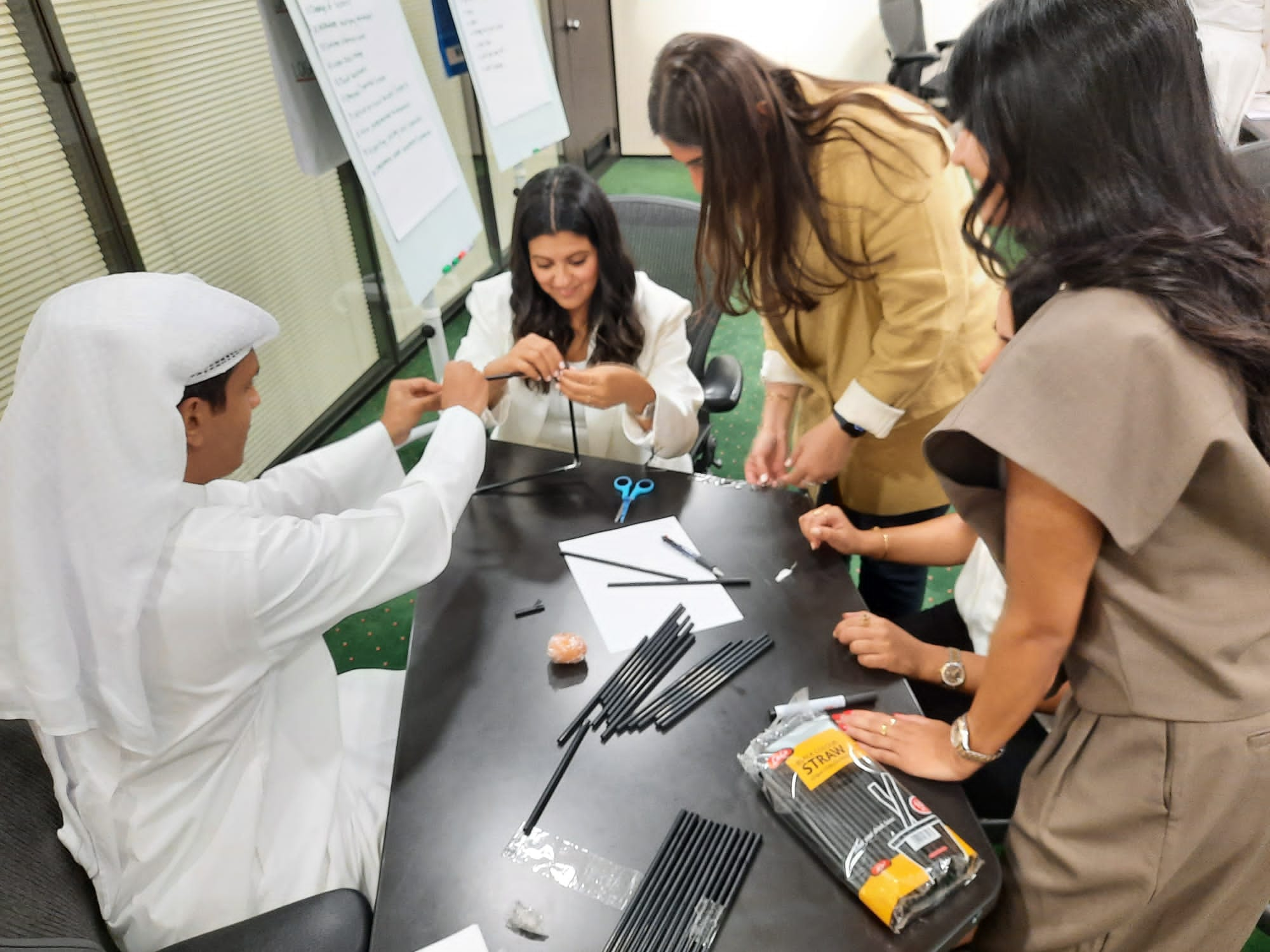Leading Through Pressure Training
For Organisations Only
In-house training
- Face-to-face (flexible structure <15 people)
- Live virtual (flexible structure <15 people)
- Conferences and events (<500 people)
- Webinar (1hr introduction <1000 people)
- With or without actors
- Fully customisable
Leading Through Pressure Training – 2 Days
With so much complexity and uncertainty in the environment around us, it’s inevitable that sometimes things may go wrong, and the pressure will build. As leaders, how we manage pressure, tension and conflict has a significant impact on outcomes for our organisations.
This course looks at how to re-frame the impact of pressure and tension and use it as a source of positivity and creativity. The course will equip leaders with tools and techniques to manage better through pressure and drive growth.
Course Content
What does pressure and tension mean to me?
Every leader will face conflicting objectives at some time. The course begins by asking leaders to reflect on instances where they’ve had competing priorities and conflicting objectives to deal with. Perhaps they had a particularly challenging stakeholder, or competitive situation. What did that look like, and how did they manage those pressures?
We consider three common pairs of competing objectives, to understand the relationship and pressures that sometimes exist between these common objectives.
Pressure can also arise from our interactions and relationships with people, and sometime with people linked to conflicting objectives. We discuss how leaders can find balance when managing conflicts and challenging situations.
The benefits of pressure
Debate is interesting and conflict can often lead to creative or innovative solutions. This is sometimes known as a positive dynamic tension mindset. Dynamic tension or pressure can be a source of positivity, emergence, creativity, and deep learning.
Disagreement in the workplace is an effective tool to drive efficiency and innovation, but it’s often hindered by fear. We consider the role of leaders in creating an environment where people are empowered and feel confident to engage in debate, to challenge, and to view disagreement as an opportunity for collaboration and growth.
Tools and techniques for managing pressure and driving growth outcomes
We explore how to leverage dynamic pressure and tension by encouraging interaction, building networks, and creating space for healthy challenge.
By considering how we frame disagreement at work and understanding two possible mindsets when it comes to handling pressure, leaders will develop awareness of the risks present in both mindsets and their role in cultivating and practising a positive dynamic mindset.
Engaging with others in times of pressure and tension
This activity focuses on practical techniques and uses context-relevant scenarios to bring the theory to life. With live virtual programmes, this can be enhanced using actors, who will challenge the leaders to put into practices the tools and techniques discussed throughout the session. We also think forward and prepare an action p
Let's get started...
Contact us with your availability for a call and we will send you a proposal, programme outline and quotation for your learning and development project.
Use Actors in Your Training
Through clever script writing, goose-bump inducing delivery and professional facilitation we can bring so much to life. We stimulate emotion, penetrate the long-term memory and create lasting change.
When we use live drama, we are able to have the actors play out the scenario and then be hot seated for the audience to ask them questions whilst they remain in character. Hot seating works so well because actors work with a pre-rehearsed backstory, so they are able to respond in character. They progressively reveal unexpected elements of their story that will not have previously been told. It can bust assumptions that the audience might have made based on the scenario (situation) but not fully understanding the impact at first sight.
Using actors in this programme enables us to bring to:
- See a typical situation from a different perspective
- Give attendees a chance to challenge the actors whilst they are still in character
- Demonstrate that things aren’t always what they seem at first glance
- Provide delegates with an opportunity to test out alternative ways of approaching different situations
- Create an experience which stays in the long-term memory
Case Study

Kuwait Fund for Arab Economic Development
Upskilling engineering, architectural and bio-medical graduates“I want to take the chance to thank you again for this wonderful course, it’s been my absolute pleasure and honour to be trained by you. I honestly learned a lot during this week, I hope we will keep in touch.”
READ CASE STUDY